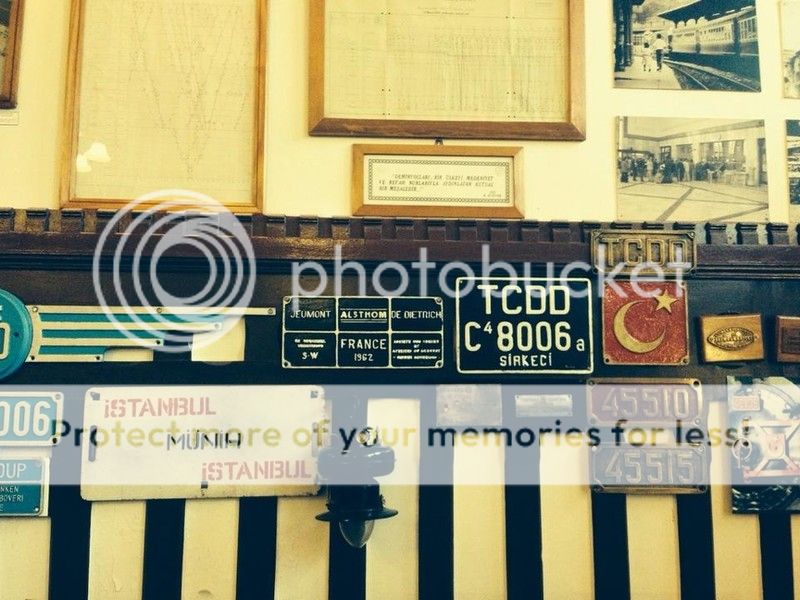GPS : 41°00'54.0"N 28°58'34.0"E / 41.015000, 28.976111

PHOTOGRAPHS ALBUM
Istanbul Railway Museum is opened on 23th September 2005. A small museum can ve visited inside Sirkeci station. This is only one room, whose entrace is on the main platform. Three hundred cultural objects are being exhibited in the museum. A collection of object and souvenir is on displays: old pictures, tools, medals, dinning care silverware... The most interresting item is a front end from a E8000. Its displays the cab with all its equipement.
In the museum, which is housed in the 1888-built and 1890-opened railway terminal, around 300 historical items are on display. The exhibits of the museum covering an area of 145 m2 (1,560 sq ft) are parts of the trains and the railway stations, photographs as well as related documents. A few to name are: furniture and silver services used in dining cars, station office equipment, driver cab of an electric suburban train, manufacturer plates of some historic TCDD rolling stock, warning plates, station's clock and bell.
HISTORY OF SİRKECİ (ORIENT) STATION
With a great ceremony the foundation Stone of the Sirkeci Main Station- Gate of Istanbul to Europe - was laid on February 11th, 1888. The architect of this magnificent station building, opened for service on November 3 rd 1890, was the German architect and engineer A. Jasmund. Jasmund, who graduated from the University of Berlin came to Istanbul in order to make investigations on the oriental architecture, gained the trust of Sultan Abdülhamid II and became his advisory architect.
During the planning of the station building, one thing had been of utmost importance to Jasmund. Istanbul is the point where the West ends and the East begins. In other words, it is he point where East and West meets. Therefore the building had to be applied in an oriental style into life, and regional and national style shapes had to be used. In order to reflect this style, bands of bricks were used at facades.
Windows with peak arcs and in the middle a wide entrance door, that reminded to the stone portals of the Selçuklu epoch - were built. The stained - glasses completed this style. The fundament of the building was consisted of granite, the facedes of marble and Stones that had been brought from Marseilles, Arden. In the waiting halls, large tile stoves produced in Austria were installed. The lightning of the building was provided by 300 gas lanterns placed at different locations.
The Sirkeci Station, which is the last stop of Orient Express, was magnificent at the time it was build. The sea was reaching to the building foot and terraces lead down to the sea. On both sides of the middle entrance there were turret clocks, three big restaurants, a large beer-garden and an outdoor restaurant behind the station. The big restaurant in the Station was at the turret clocks side. A long marble stairway leads to the restaurant.
When the railway started to be built in Yedikule and reached the point of Yenikapı disputes came up regarding that the line should lead to Sarayburnu through the garden of Topkapı Palace. This dispute was put to an end by Sultan Abdülaziz who allowed to lay the rails through the garden of the Palace.
The building permission of 337 km long part within the national borders of the total 200 km long Orient Railway between Istanbul-Edirne and Kırklareli-Alpullu was given to Baron Hirch in 1869, was completed in 1888, put into operation and this Project connected Istanbul to European railways.
LOCATION SATELLITE MAP
WEB SITE : Turkish State Railways Museum
MORE INFO & CONTACT
Phone : +90 212 520 6575 / +90 212 527 1201 / +90 444 8233
These scripts and photographs are registered under © Copyright 2017, respected writers and photographers from the internet. All Rights Reserved.
No comments:
Post a Comment